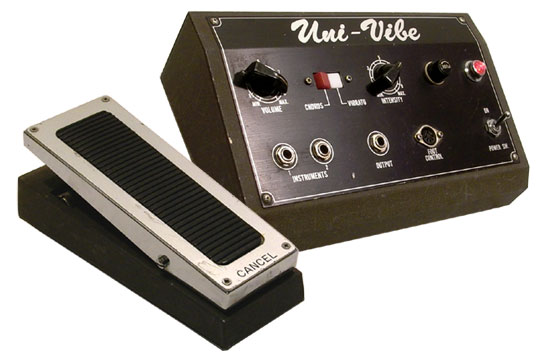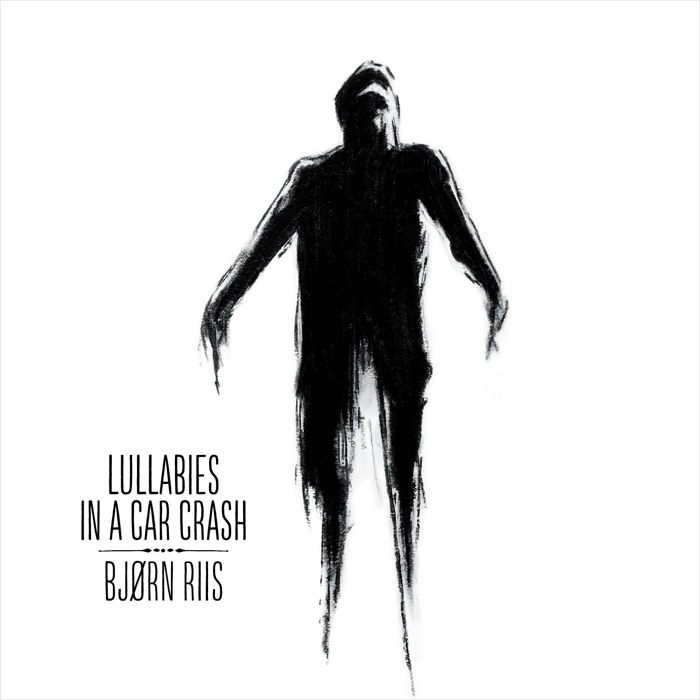If you have ever been to a concert, seen a live show, given change to a busker, or sat and enjoyed a cup of coffee while listening to a solo acoustic act, chances are you’ve seen a guitarist twiddle with some weird gadgets at their feet, or bend over during a show to twist a knob or two. If you’ve ever wondered how guitar players create their sonic signatures (or “tone”); it’s with the help of these little boxes, known as guitar pedals, or stomp boxes, that electric guitar players can create new worlds of sonic exploration, soaring distortion soaked leads, crunchy driving rhythms, ambient modulated room filling textures, and everything in between. Here are the Top 10 most influential guitar pedals, how they work, and who used them.
- The Heil Talk Box
For fans of classic rock and funk, the talk box is almost synonymous with the name Peter Frampton. He was the first big user, which rocketed the talk box from obscure musical gadgetry to super stardom. The idea behind the talk box has been around since 1939, where it was used a gimmick for lap steel guitar players to create a “singing guitar effect”. However, it wasn’t until The Kustom Electronics Talk Box (better known as “The Bag”), came along in 1969, that we began to see the talk box more widely used in rock and funk. All through the 70’s, throughout almost every popular genre, the talk box’s instantly recognizable metallic gargle can be heard on many seminal albums from Jeff Beck’s Blow by Blow (1975), to Stevie Wonder’s Music of My Mind (1972). The very first modern “high powered” talkbox that musicians still use today was created by Bob Heil and Joe Walsh for his Barnstormer tour, along with his guitar tech. It employed the same principles as The Bag, but was adapted for high level rock shows. That version of the talk box was and still is the most widely used version of the effect, even though simpler, more modern appropriations are available.
Examples of talkbox use in songs:
- Peter Frampton – Do You Feel Like We Do? (Frampton Comes Alive: 1976)
- Joe Walsh – Rocky Mountain Way (The Smoker Your Drink, The Player You Get: 1973)
- Pink Floyd – Pigs (Three Different Ones) (Animals: 1977)
- Univox (Shin-Ei) Uni-Vibe
Listen to the heartbeat, the clanking of money, the proletariat British voices speaking about insanity, and the screams of Clare Tory amalgamate into a climax, as it drops you into the arms of a warm, rich swirl. Listen to the pounding feedback and seething, pulsating fuzz as it rips your body apart through the hands of a machine gun wielding master of the Stratocaster. Hear the crooning and creaking of the bridge of sighs as it buckles under the weight of the thick, syrupy throb. These most majestic and unique sounds were created by the venerable Univox (Shin-Ei) Uni-Vibe. It’s original intent was to replicate the swirling, three dimensional sounds of a Leslie speaker. Although it wasn’t very good at it, it became a unique effect in its own right. Employing a lamp and photocell circuit, it creates a pulsing or throbbing effect, closer to a phaser then a Leslie, but far more thick and deeper sounding. The Uni-Vibe was most prominently used by Jimi Hendrix and David Gilmour, but many others have used it as well, such as Robin Trower, Trey Anastasio, and many others. Since the original Shin-Ei unit was discontinued, many modern re-designs and clones have flooded the market, with the ones that feature an actual lamp and photocell circuit being the most desirable among Vibe fanatics. These are much more stable and portable than their vintage counterparts, but some guitarists still swear by an original. If you’ve got a hankering for some vintage Vibe, they can sometimes be found on eBay fetching prices ranging from $1200-2000 USD.
Notable Uni-Vibe Uses:
- Pink Floyd – Dark Side of the Moon: 1973
- Jimi Hendrix – Machine Gun (Band of Gypsys: 1970)
- Robin Trower – Bridge of Sighs (Bridge of Sighs: 1974)


